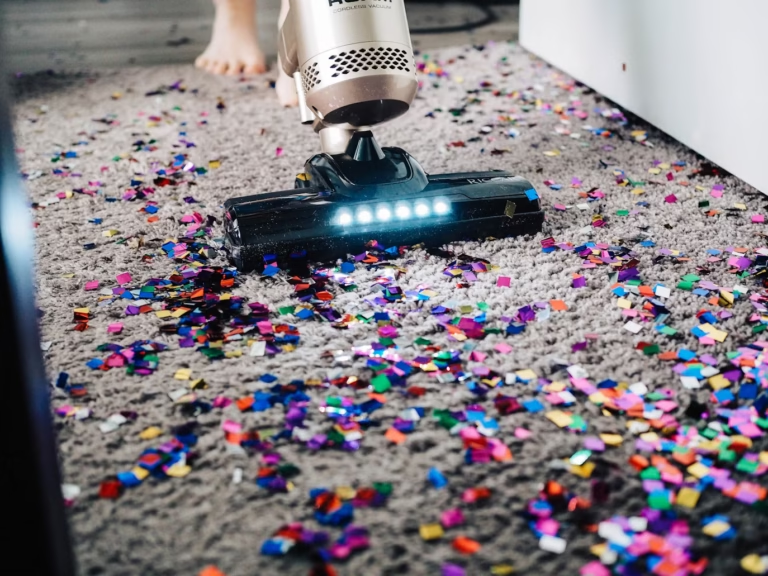Smart home technology is transforming the way we clean, and one of the most popular innovations is the smart vacuum cleaner. Also known as robot vacuum cleaners, these compact, automated devices are designed to clean floors with minimal human input. If you’re new to the world of smart vacuums, this beginner’s guide will walk you through how they work, what makes them “smart,” and how they can fit into your modern lifestyle.
What Is a Smart Vacuum Cleaner?
A smart vacuum cleaner is an autonomous cleaning device that uses sensors, algorithms, and connectivity features to navigate and clean your home on its own. Unlike traditional vacuums that require manual operation, smart vacuums can be programmed, scheduled, and even controlled through a smartphone or voice assistant.
How Smart Vacuum Cleaners Work
Smart vacuum cleaners use a combination of hardware and software to perform efficient, autonomous cleaning. Here’s how it works step by step:
1. Mapping and Navigation
Smart vacuums are equipped with sensors, cameras, and sometimes LIDAR (Light Detection and Ranging) technology. These tools help the vacuum:
- Detect furniture and walls
- Avoid obstacles like shoes or cords
- Create a digital map of your home
- Plan an efficient cleaning path
More advanced models can even remember multiple floor maps for multi-level homes.
2. Motion and Cleaning Patterns
Once the room is mapped, the vacuum uses algorithms to move in systematic patterns like:
- Zig-zag routes
- Spiral cleaning
- Edge-following mode
This ensures no area is left untouched, and it improves cleaning efficiency compared to random-motion robots.
3. Suction and Brushes
Just like traditional vacuums, smart models use:
- Suction motors to collect dust and debris
- Rotating side brushes to sweep dirt into the suction path
- Main brushes (sometimes rubber rollers) for carpets or hard floors
Some models automatically adjust suction based on the surface type.
4. Sensors for Safety and Efficiency
Smart vacuums come with various sensors for different functions:
- Cliff sensors: Prevent falls from stairs
- Bump sensors: Detect and avoid obstacles
- Dirt sensors: Focus more on heavily soiled areas
- Wall sensors: Allow edge-cleaning without crashing into walls
These features help the vacuum clean effectively without damaging furniture or itself.
5. Connectivity and Control
Most smart vacuums connect to your Wi-Fi network and offer app support. Through the app, you can:
- Start, stop, or schedule cleaning
- View cleaning history and maps
- Set no-go zones (virtual walls)
- Control the vacuum remotely from anywhere
Many models are also compatible with Amazon Alexa or Google Assistant, allowing voice commands like “Start cleaning” or “Return to base.”
6. Self-Charging
When the battery runs low, the vacuum automatically returns to its charging dock. Some models even resume cleaning once recharged, picking up where they left off.
7. Self-Emptying and Maintenance Features
High-end smart vacuums come with auto-empty stations, where the vacuum deposits collected debris into a larger bag or bin, reducing the need for frequent manual emptying.
Benefits of Using a Smart Vacuum Cleaner
- Time-saving: Cleans while you relax or work
- Scheduled cleaning: Keeps your home consistently tidy
- Improved air quality: Frequent vacuuming reduces dust and allergens
- Pet-friendly: Great for homes with shedding pets
- Space-efficient: Slim design fits under furniture
Common Limitations to Be Aware Of
While smart vacuums are highly convenient, they do have some limitations:
- Struggle with cluttered or multi-surface environments
- May get stuck on high rugs or thresholds
- Require occasional maintenance (e.g., cleaning brushes, emptying dustbin)
- Initial cost can be higher than traditional vacuums
Popular Brands of Smart Vacuums
If you’re considering purchasing one, some trusted brands include:
- iRobot Roomba
- Roborock
- Eufy
- Neato Robotics
- Shark IQ
Each brand offers models with various features and price points to suit different needs.
FAQs About Smart Vacuum Cleaners
Q1. Do smart vacuums work on all floor types?
Yes, most models work on hardwood, tile, laminate, and low to medium-pile carpets. Some high-end models can even detect floor types and adjust suction accordingly.
Q2. Can smart vacuums clean multiple rooms?
Absolutely. As long as the doors are open and the vacuum can move freely, it can clean multiple rooms and even map them individually.
Q3. What happens if the vacuum gets stuck?
Most smart vacuums send a notification to your phone if they get stuck or need help. They also try to reverse or rotate to free themselves automatically.
Q4. How long do the batteries last?
Battery life ranges from 60 to 150 minutes depending on the model and settings. When the battery runs low, the vacuum returns to the dock to recharge.
Q5. Do I still need a regular vacuum?
In some cases, yes. Smart vacuums are great for maintenance cleaning but may not replace deep-cleaning needs, especially on thick carpets or stairs.
Conclusion
Smart vacuum cleaners are a powerful addition to any modern household. With features like intelligent navigation, app control, self-charging, and scheduling, they make floor cleaning effortless and consistent. Whether you’re a busy professional, a pet owner, or simply someone looking to reduce daily chores, a smart vacuum can save time and help maintain a cleaner home.
As the technology continues to evolve, smart vacuums are becoming more affordable and efficient — making them an ideal investment for convenience, comfort, and cleaner living.

